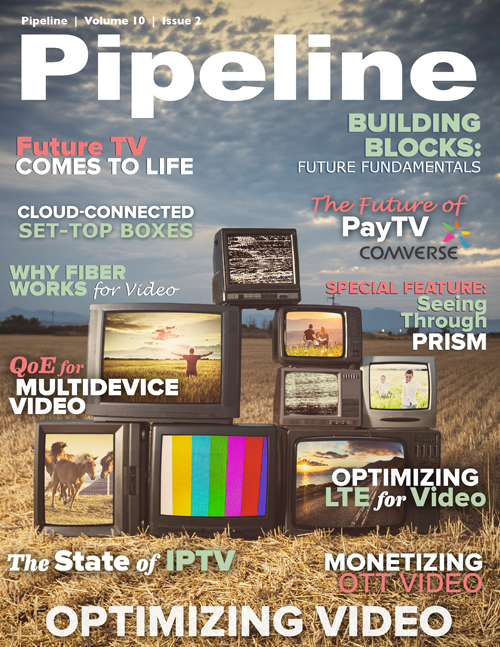Managing the Quality of Multidevice Video
 The migration to all-IP networks and the flood of new viewing devices, from smartphones and game consoles to smart TVs, signal that the video delivery market is going through a major revolution. The surprising speed with which tablets have been adopted has led to the normalization of multimedia
consumption on the move, leading to a shift in the way services are delivered and video quality is controlled, just as a shift in the way
that cable, satellite and telecom operators engage with customers has emerged because of “video application providers”—in other words, pure internet players—that now compete with the
industry’s established service providers.
The migration to all-IP networks and the flood of new viewing devices, from smartphones and game consoles to smart TVs, signal that the video delivery market is going through a major revolution. The surprising speed with which tablets have been adopted has led to the normalization of multimedia
consumption on the move, leading to a shift in the way services are delivered and video quality is controlled, just as a shift in the way
that cable, satellite and telecom operators engage with customers has emerged because of “video application providers”—in other words, pure internet players—that now compete with the
industry’s established service providers.
Growing complexity in the delivery chain
The latest mobile devices, with their intuitive user interfaces and video applications, have been specially designed to facilitate the consumption of video-on-demand services as broadband internet becomes more widely available and reliable. Consumers are now choosing to use their own devices; they want to be able to access services when they’re on the move and connect to their providers’ networks wherever they are.
Operators no longer control the end-to-end delivery infrastructure in this new, multiscreen world. They now have to rely on a number of third parties, such as content delivery networks and internet service providers, and as a result, they generally have no information on how their services are actually reaching customers or the perceived level of quality of said services. Compounding these blind spots is the fact that new viewing devices are coming onto the market every day, each with specific software and features. It is thus becoming an increasing headache to guarantee that multiscreen video services can reach the maximum number of subscribers with the quality that’s necessary to generate consistent, profit-yielding revenue.
Quality and performance can no longer be predicted just by looking at quality-of-service (QoS) information from networks and infrastructure equipment, which is why measuring QoS via the simple deployment of network probes is insufficient and, in some cases, irrelevant, such as when subscribers are connected to a third-party network. Service providers are obligated to acquire next-generation monitoring technologies to ensure quality on all types of devices as well as uninterrupted service no matter what local loop, network technology or viewing devices are being used.
In the realm of IP, quality of experience, or QoE, is unrelated to the quality and performance of network equipment and transmission infrastructure. The quality of multiscreen services is impacted by the ensemble of terminals, applications and service platforms that are utilized, not to mention the roles played by content owners and delivery partners and their combined technologies.
The only way for operators to regain visibility and control of the quality they’re supplying is to look at a customer’s actual viewing experience. That means they need to test services 24 hours a day, 7 days a week in the same way that users access content, gathering information on everything from levels of image quality to how long it takes a video request to load and begin playing. Operators also need to critically assess the performance of their services when their users are conducting transactions, e.g., buying or renting a video on demand. To make good on the promise of a successful multiscreen video service, an operator must see to it that the best possible overall experience is provided to each individual subscriber so that he or she is encouraged to repeatedly engage in transactions that generate revenue.Broadcast to mobile: over before it started
When mobile-video services first appeared, the telecom industry was looking at a broadcast model that would supply a handful of national channels, such as CBS or Fox, and whatever shows they happened to be airing at the time. But with the greater capacity of IP networks that are now available on mobile devices, the video delivery market no longer accommodates that model: customers expect access to every channel and every show—broadcast and cable, past and present, on demand and (mostly) commercial free—as they build their own channels, complete with full interactivity.



















